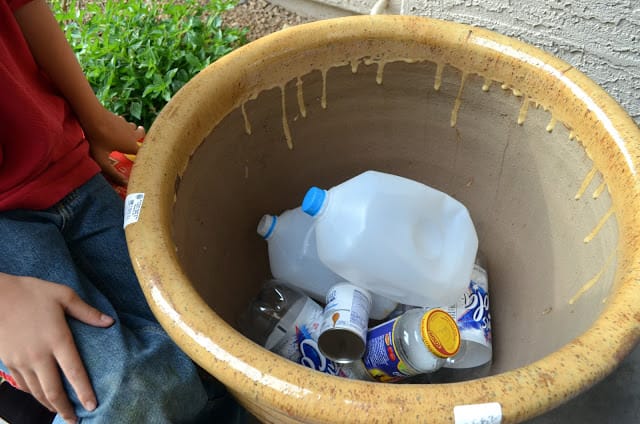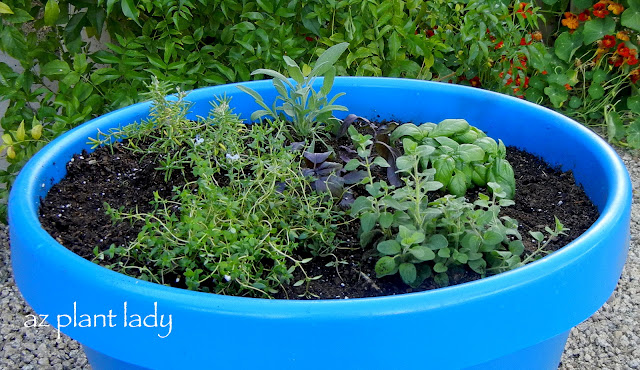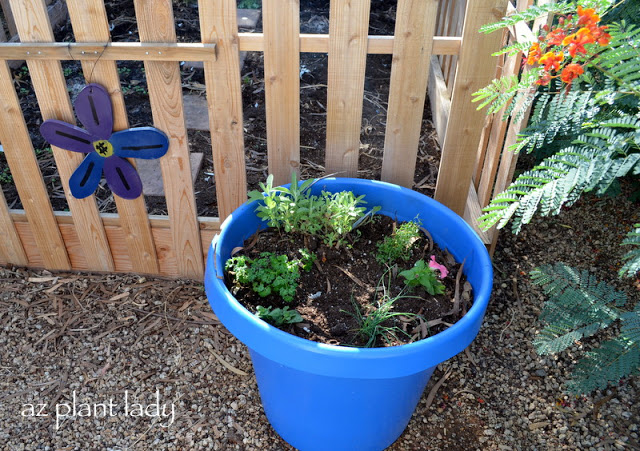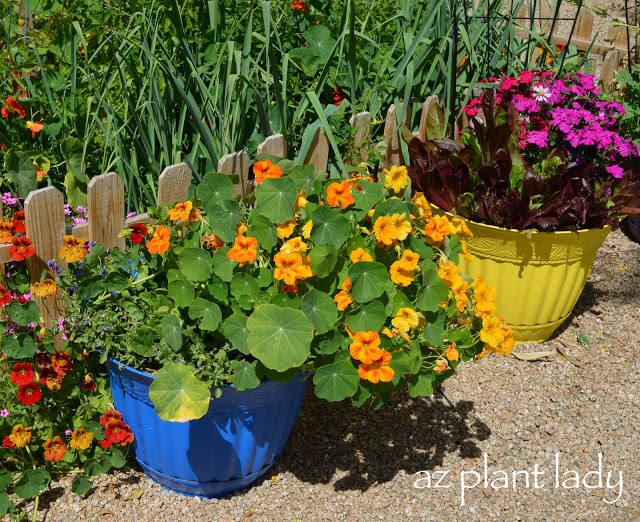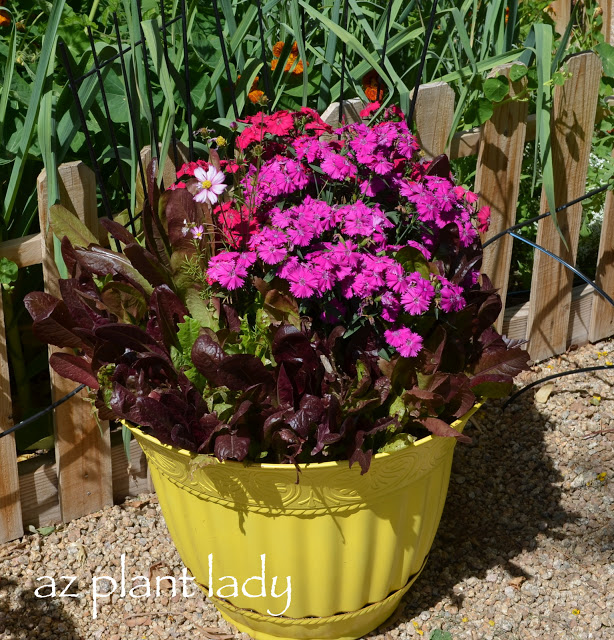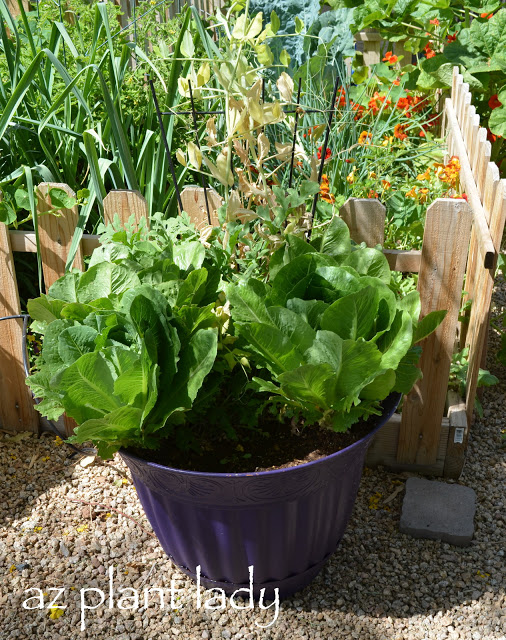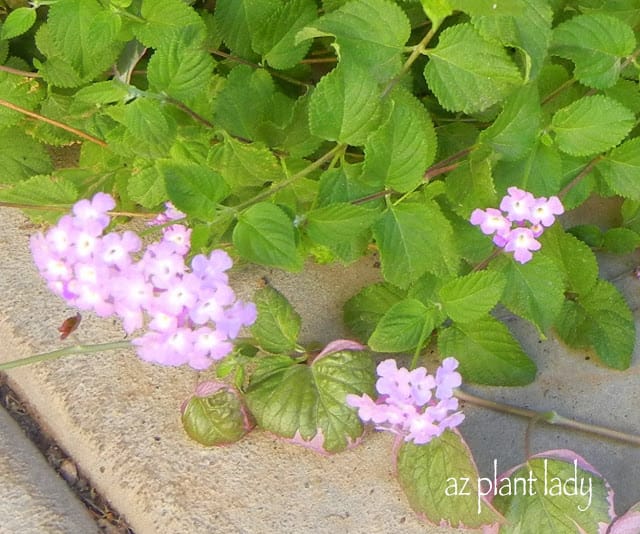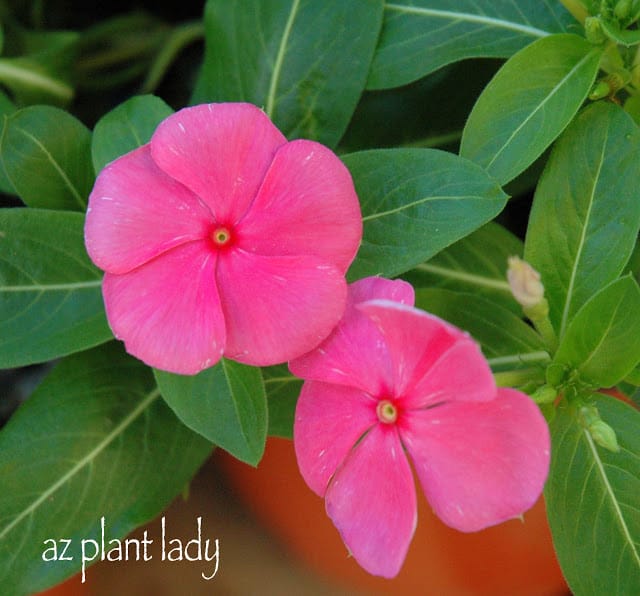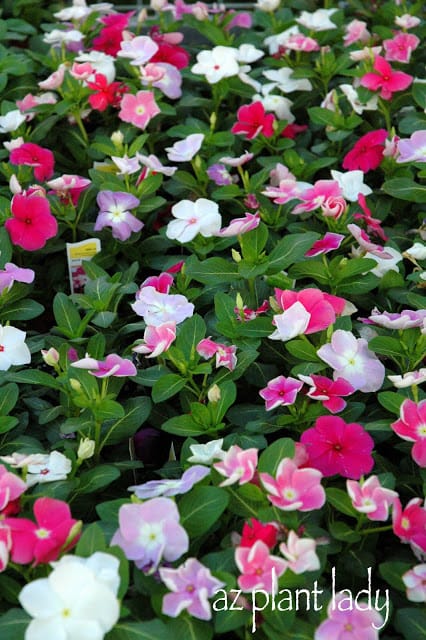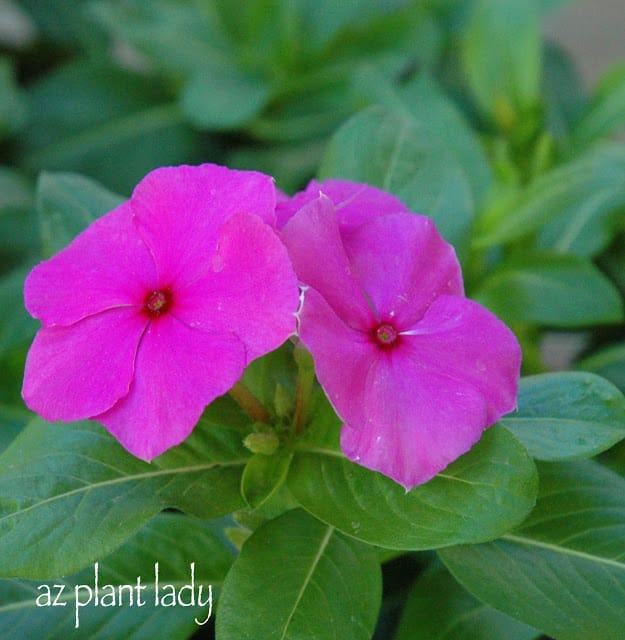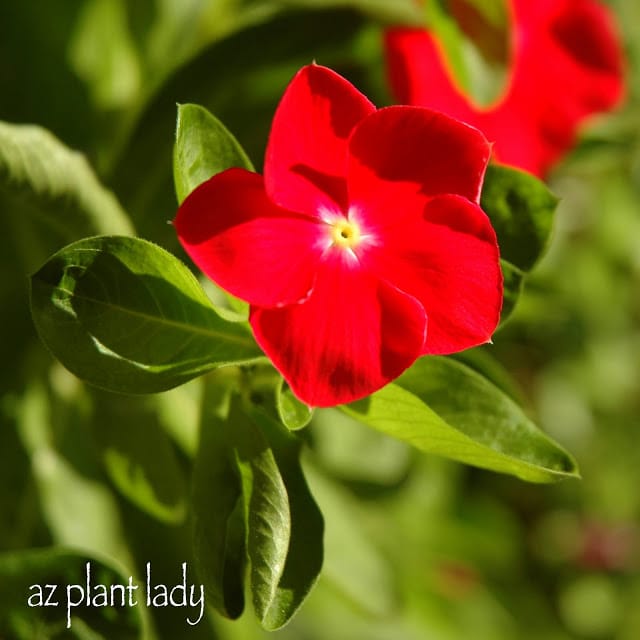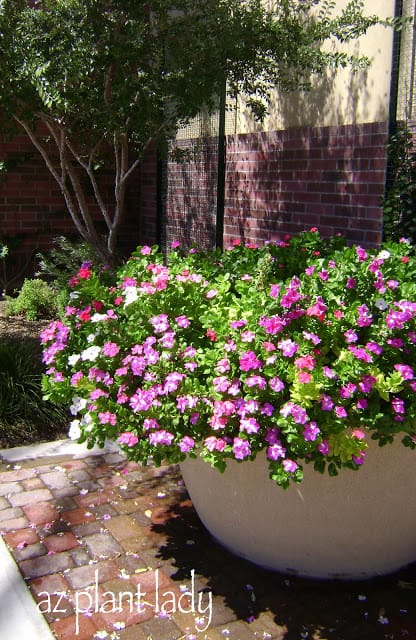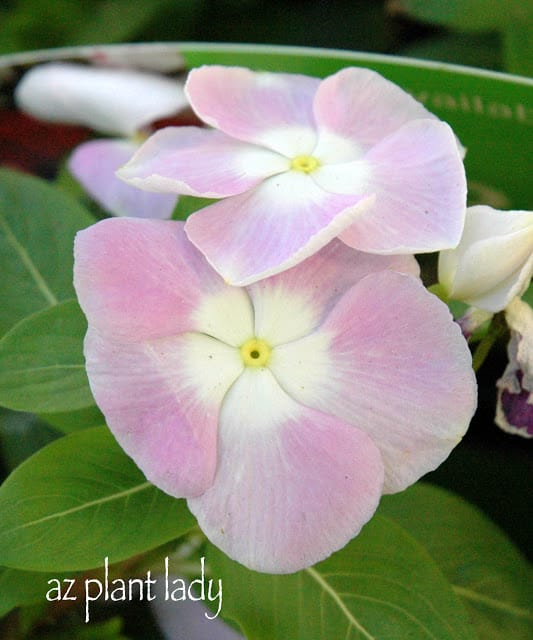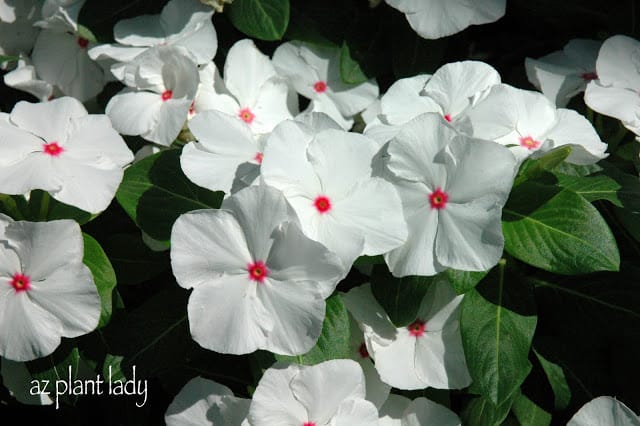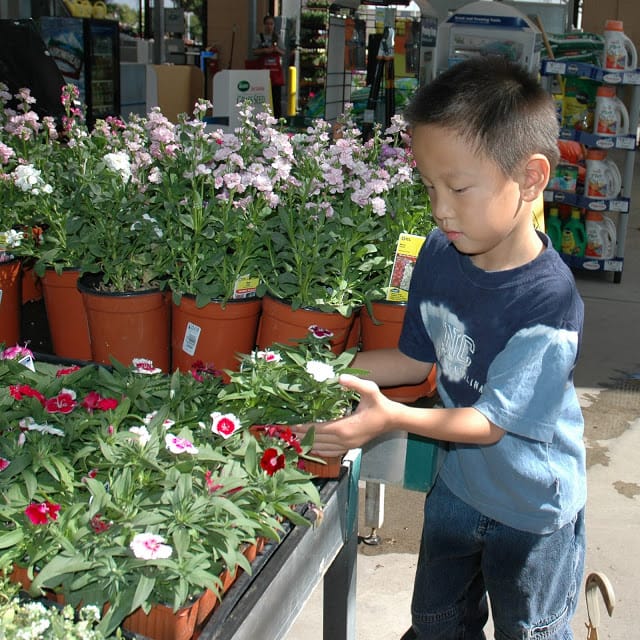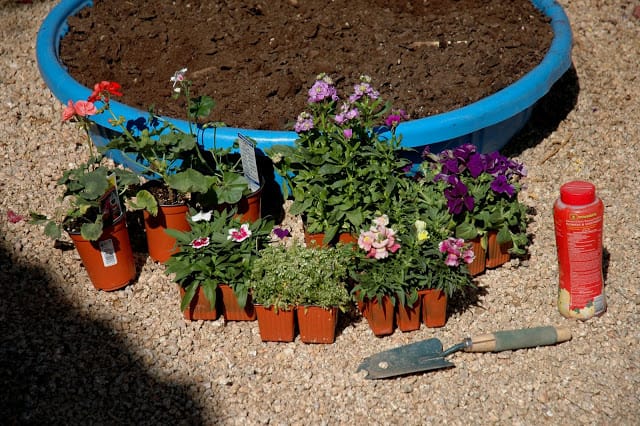One of my favorite stops on our road trip this year was visiting the gardens at the University of Tennessee.
Earlier in our trip, I visited the gardens of the University of South Carolina, so I was looking forward to seeing more campus gardens.
Even though, I had heard great things about the gardens at UT, I was surprised at how much there was to see.
The kitchen gardens were the first area we came up to.

The kitchen garden was bordered by trash cans filled with flowering annuals and tulips.
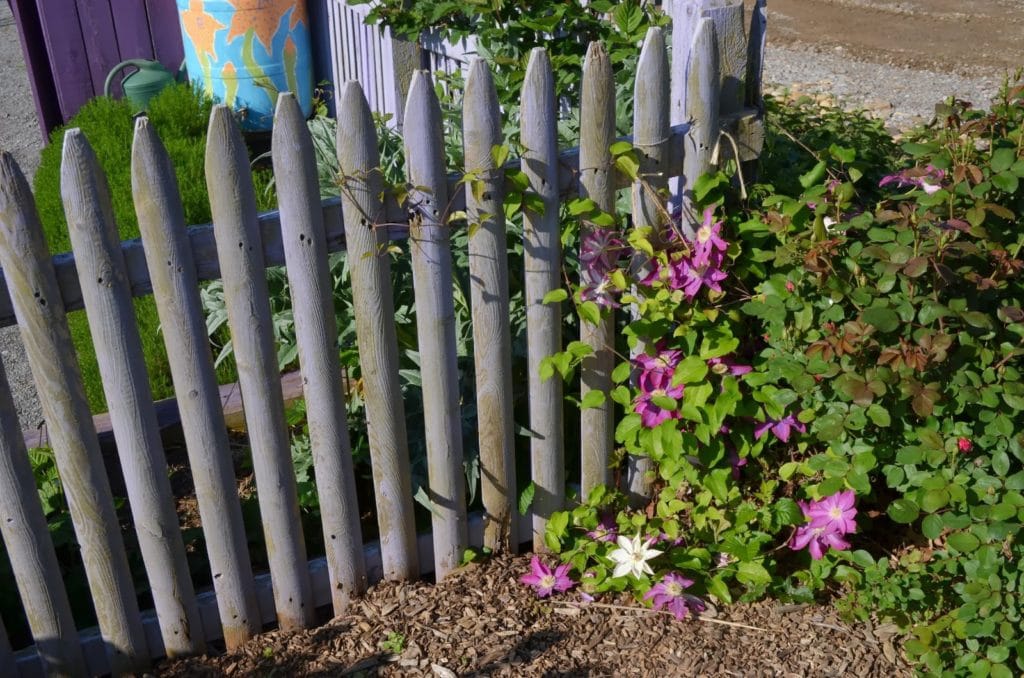
Roses and a clematis vine greeted us at the entrance of the kitchen garden.
I wish I could grow clematis vines in Arizona. I tried once – it did grow, but wouldn’t flower. Definitely NOT a ‘fuss-free’ plant for a desert garden.

The fence was made up of tree stakes, sawed in half and painted lavender. The area inside was filled with vegetables, herbs and other plants. The garden was a also a test garden for many yet to be released plant varieties.
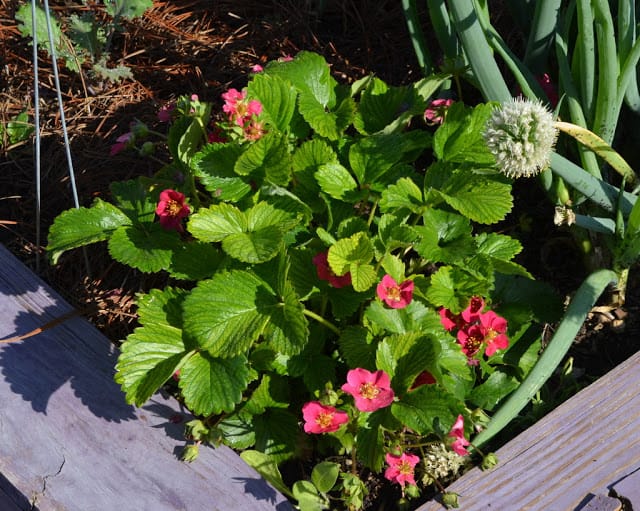
Here is a strawberry with red flowers, called ‘Toscana’.

Garlic planted among leaf lettuce look so attractive, don’t you think?
Did you know that garlic keeps bad bugs away from the lettuce? It’s true!

Here is a great example of ‘square-foot gardening‘.
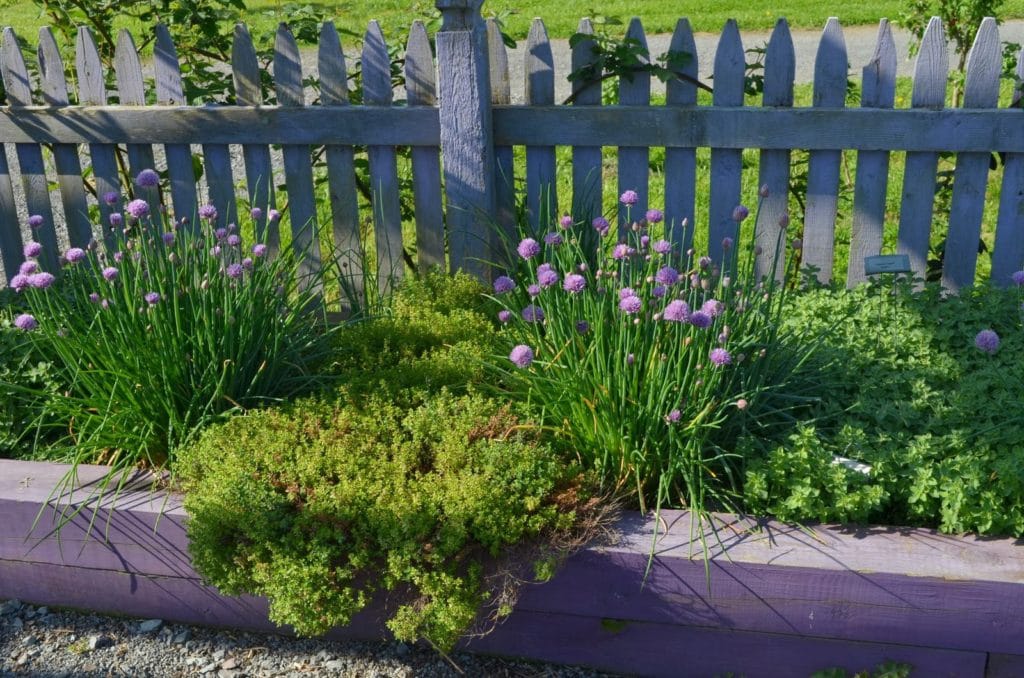
Flowering chives were just a few of the herbs that bordered the outer area of the garden.
The flowers are so pretty, that I think I’ll let some of my chives go to flower this year.
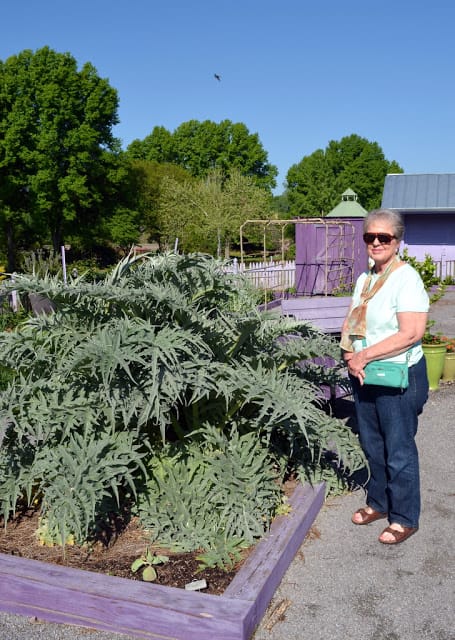
The artichoke plants were huge – my mother posed beside it so you could see how big it was.

Some of the beds were full of what many would call weeds. But this crop of ‘hairy vetch’ is actually a cover crop, which is planted in between seasons because it adds nitrogen to the soil.

Have you heard of the newest trend of vertical gardening? I love this display.
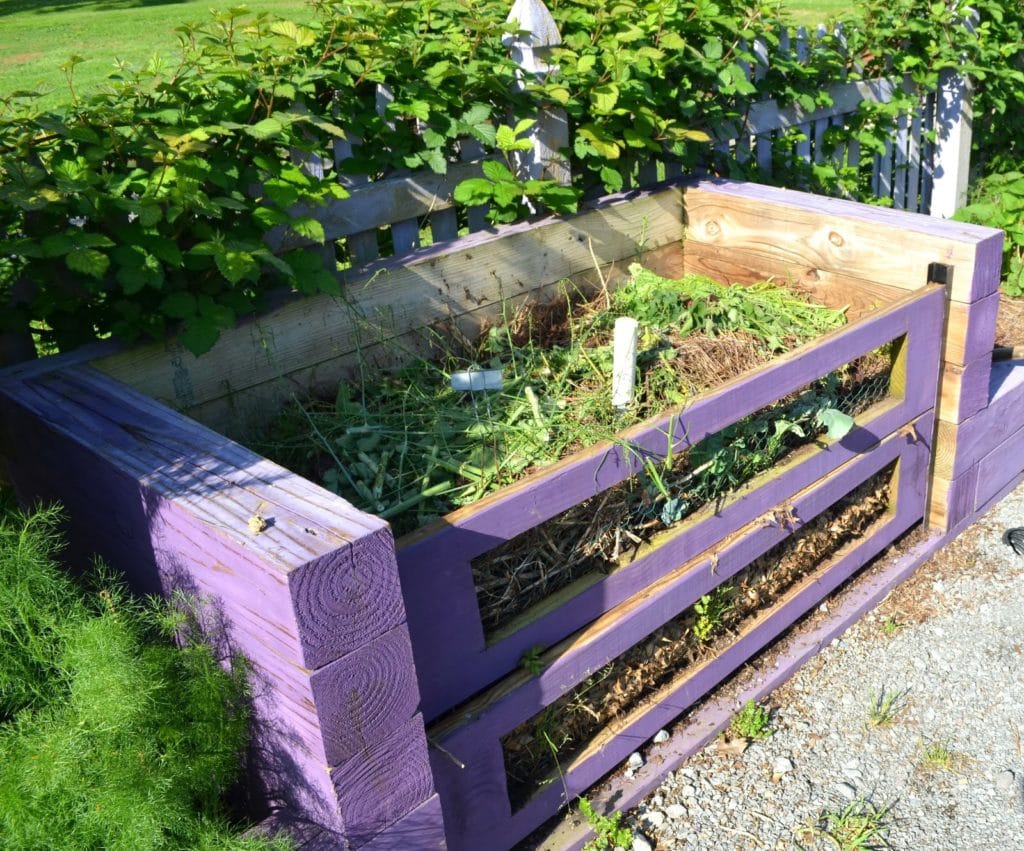
Of course, a kitchen garden should have a compost pile.
Do you see the plastic tube in the middle? That is perforated all the way down, in order to get air to all layers of the compost pile, which helps with decomposition.

Outside of the kitchen garden was an old, rusty truck that had potatoes growing in its bed.
This was a great example of what I like to call ‘functional garden art’.

Here is a cute praying mantis figure.

I did see some familiar plants that are equally at home in the desert southwest like this prickly pear and verbena (Glandularia pulchella), below.
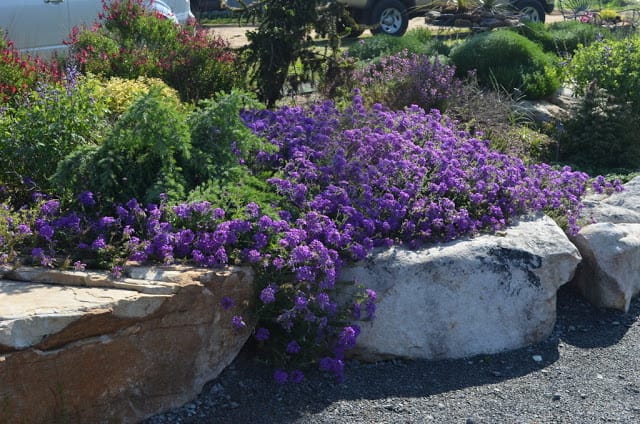
After leaving the kitchen gardens, I walked through the larger part of the university gardens.
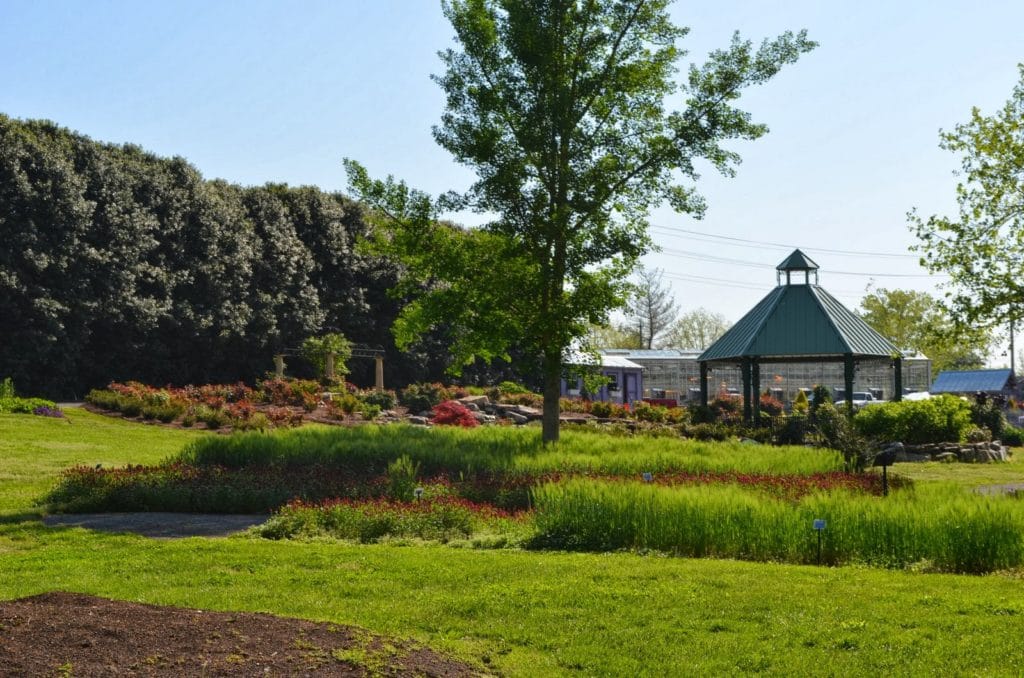
One of the things that I enjoy about traveling, is discovering new plants that don’t grow where I live.
Viewing this garden, I was often surprised to find quite a few plants that I also grow, even though my garden was about 1,800 miles away from here.
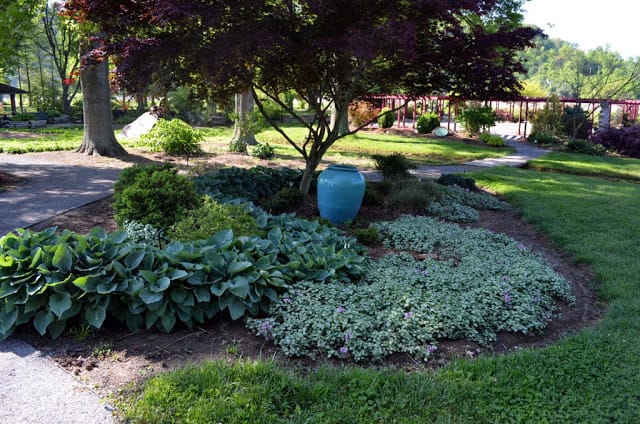
As I walked through the larger garden, there were beautiful shade plants, like these hosta.

Brightly colored azaleas dotted the landscape.
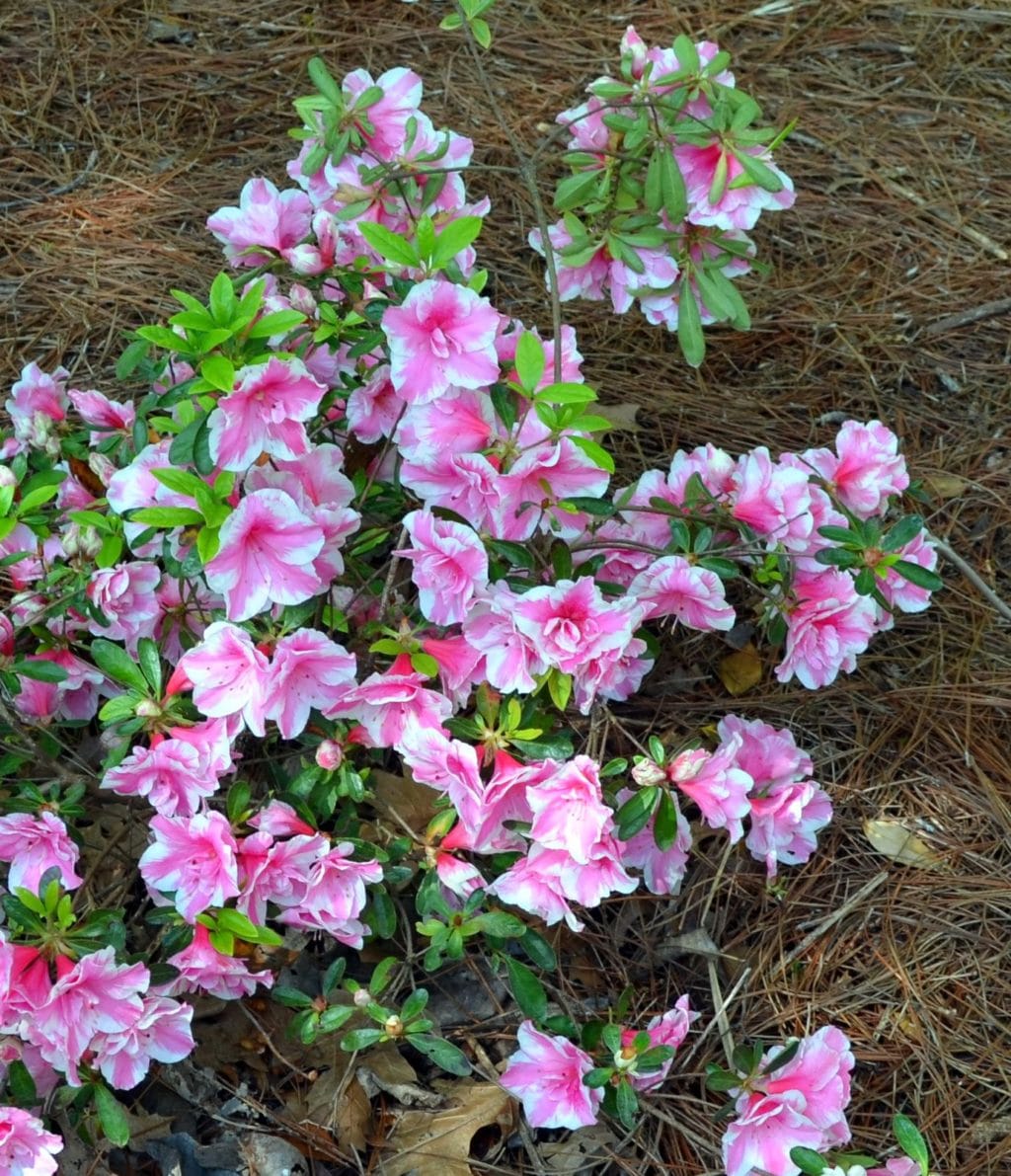
Isn’t this ‘Encore’ azalea beautiful?

Lily of-the-Valley was blooming. I love their small, delicate flowers.
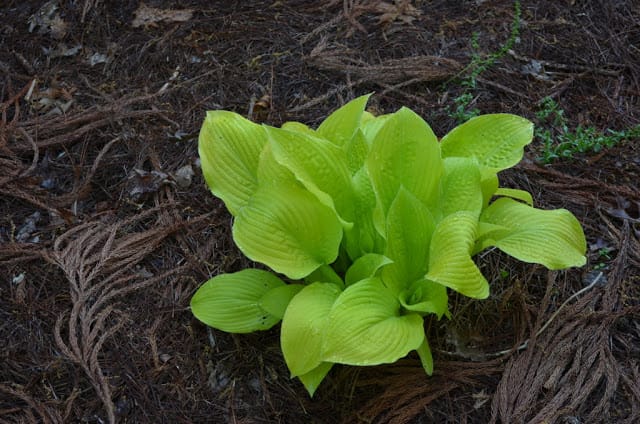
I love the lime-green color of this hosta, don’t you?

This honeysuckle smelled heavenly!

It was so pretty, too.
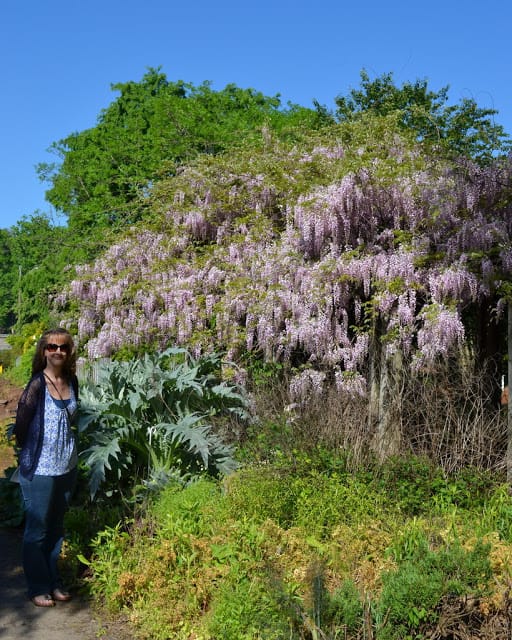
We also found a huge wisteria vine, which also had a wonderful fragrance.
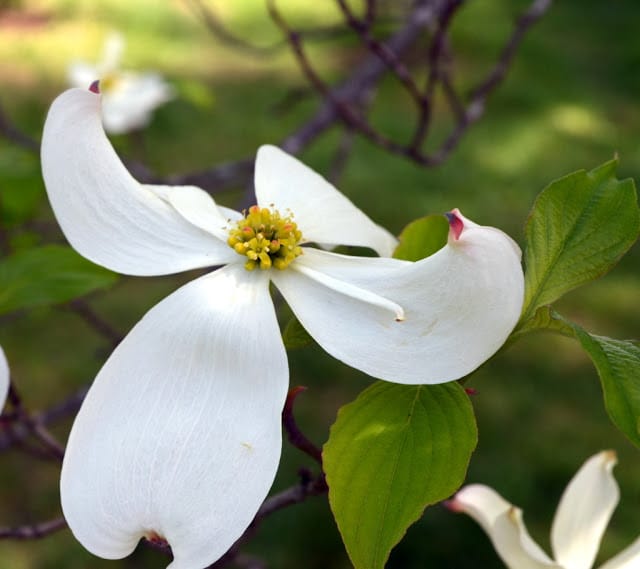
The dogwood trees were blooming.
Did you know that the outer white petals aren’t the actual flower? They are called ‘brachts’. The real flower is in the center and isn’t too showy.

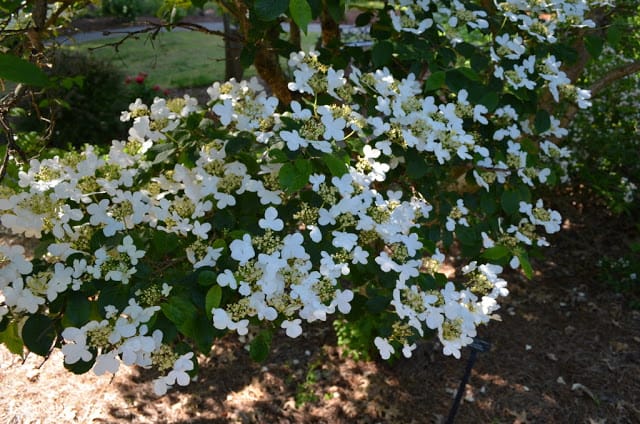
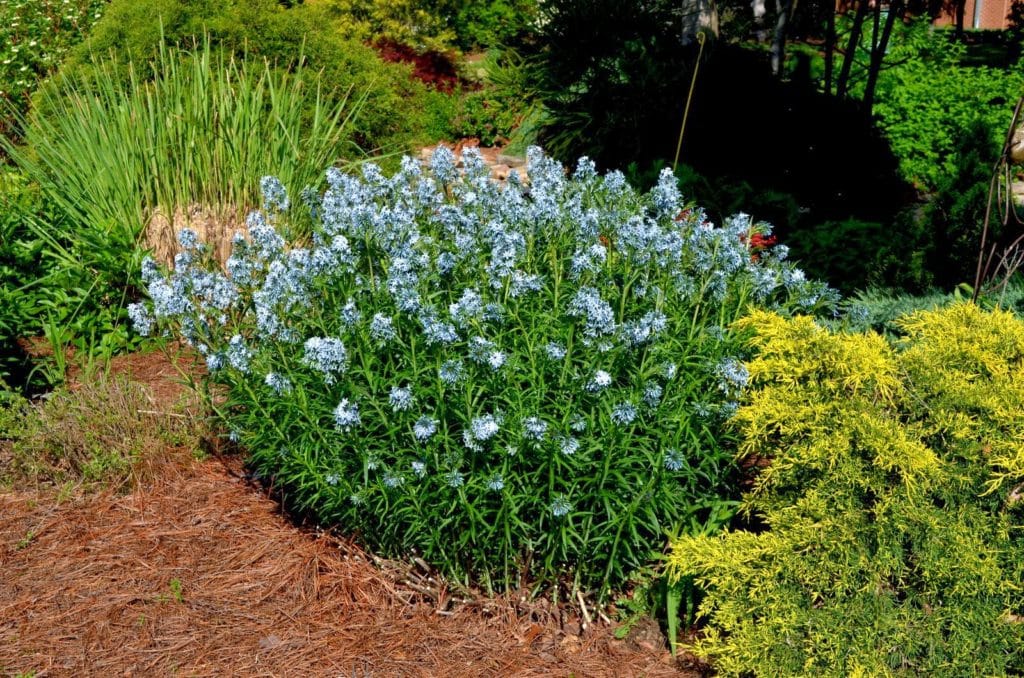
Willowleaf ‘Blue Star’ was in full bloom.

Throughout the lawn areas were softly mounded planting beds, which I liked because they added height and interest to this large expanse of lawn.

From a distance, I could see a red-flowering plant. I walked closer to see what it was…

I was surprised to find that it was Red Clover (Trifolium rubens). It was very pretty, but you need to be careful when using it as a groundcover, because like other clovers; it can be invasive.
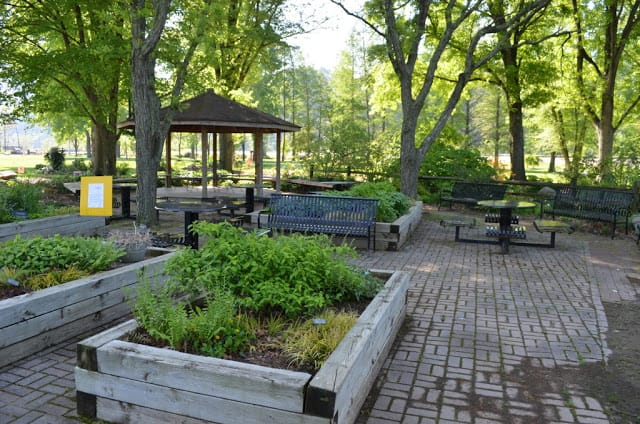
As we got ready to leave the garden, we walked through the shade garden, which had places to sit and eat.
The UT Gardens have so many different events for the public. I only wished that I lived closer 🙂
I encourage you to take some time and visit the gardens at your local university. You may be pleasantly surprised at what you find there.
Our trip is nearing its end, but I am looking forward to visiting Kentucky.
****************
“Thank you” to my friend, Dave Townsend (from Tennessee) who sent me to this wonderful garden.
I encourage you to visit Dave’s blog, Growing the Home Garden, which is a hugely popular blog – once you visit, you’ll see why.


